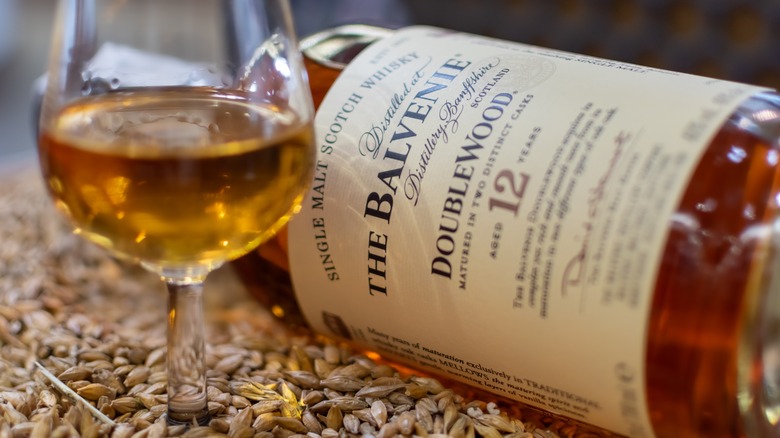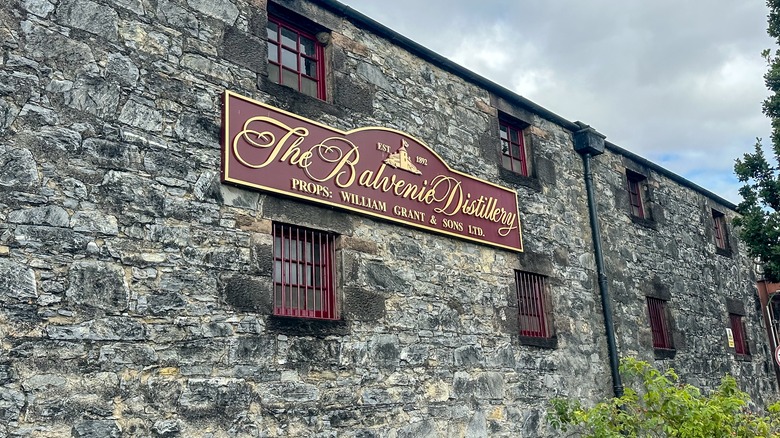What's Special About Balvenie Whisky?
At its core, all whisky (or whiskey, depending on where it's produced) is made from three simple ingredients: water, grain, and yeast. But from there, the different grains, distilling and aging processes, and other techniques produce a wide range of products that fall under this umbrella, like bourbon, which is made mostly with corn. In the case of single malt scotch, by law it must be distilled using only a malted barley mash at a single distillery, and it has to be bottled in Scotland. Even with these confines, the country's distilleries manage to craft a wide range of distinctive single malts with unique taste profiles.
In the case of the Balvenie (pronounced Bahl-VEN-ee), it's a combination of traditional methods and unique practices that make it so special. This distillery — located in the Scottish region of Speyside in the Northeastern part of the country — is one of very few that still grows its own grain and then hand-turns its malted barley. The distillery also uses a unique copper pot still design and two cask finishing. This technique that the Balvenie pioneered back in the early 1980s involves aging the whisky in more than one type of barrel that previously held rum, sherry, or port, which imparts a more complex flavor. Let's get a little deeper into Balvenie's operations.
Old school meets innovative at the Balvenie distillery
William Grant opened the Balvenie distillery in Dufftown in 1892. Tradition plays a big part in this business, which is still in the Grant family. Among the brand's old-school practices are growing its own barley on a farm operated by fifth-generation local farmers. The barley is then mixed with spring water and spread out on the malting floors, where it's hand turned up to four times a day (because of the amount of whisky the distillery produces, most of the malted barley comes from outside sources). The workers then dry the malted barley in kilns using anthracite coal and peat (semi-decayed plant matter used for fuel).
The distillery's copper stills are also unique, with a round shape at the base of the neck, which, according to the brand, allow the vapors to mix longer and helps produce the whisky's distinctive honey notes. Finally, the whisky is aged, sometimes in more than one kind of barrel to further develop distinct flavors in the final product. The Balvenie's arguably best known whisky, the 12-year-old Doublewood, exemplifies some of the beloved aspects of distillery's products. It's a well-balanced whisky with flavors like honey and cinnamon and not a lot of smokiness from peat. The Balvenie's balance of tradition and innovation has produced a long list of very special single malt scotches.

